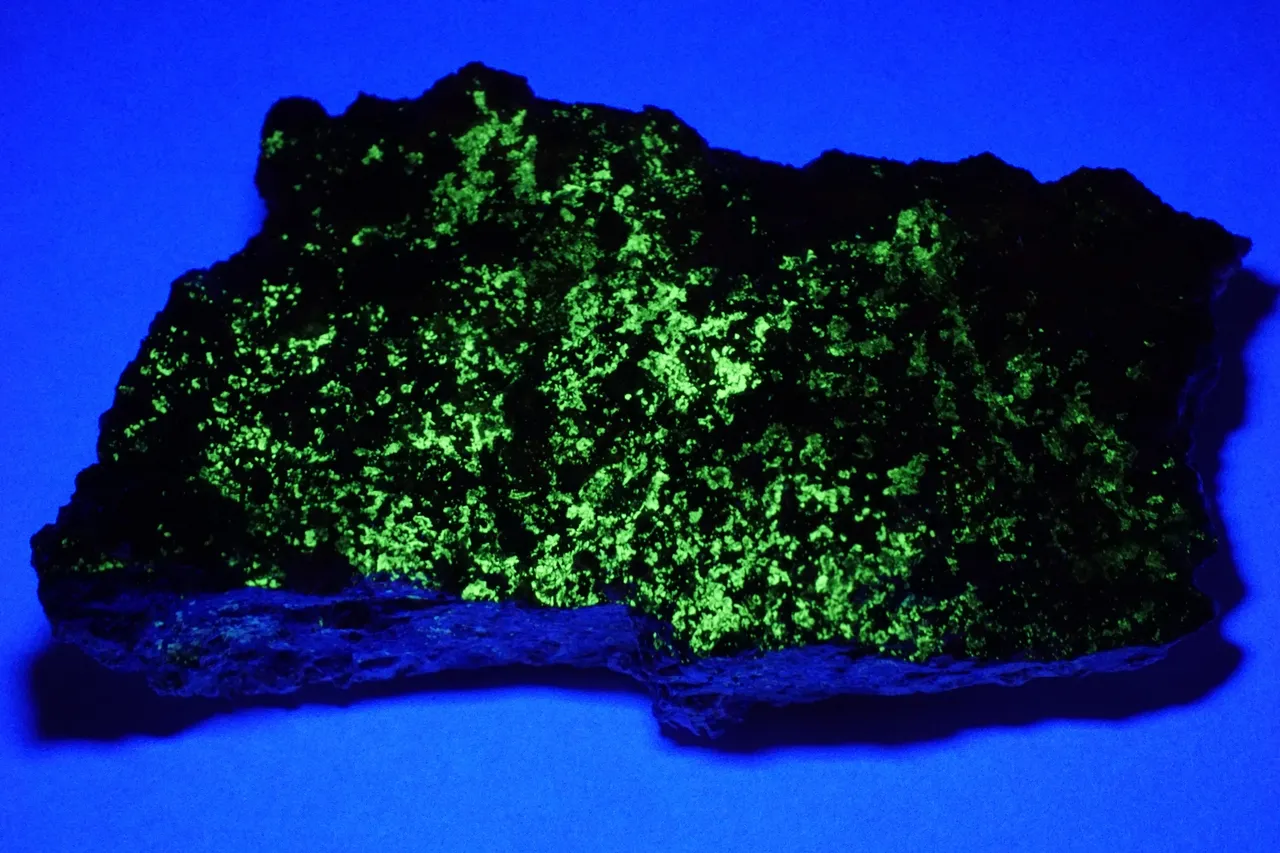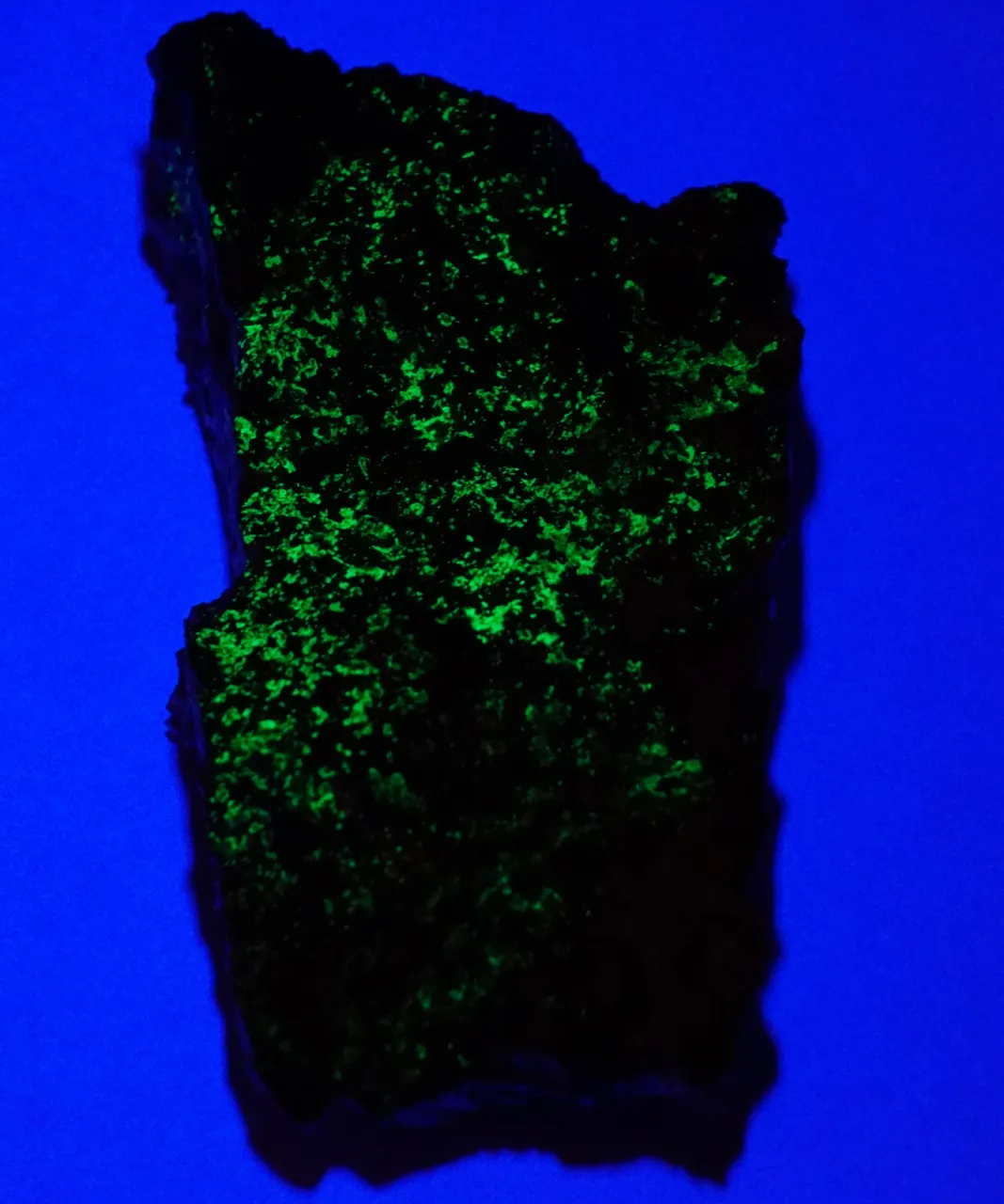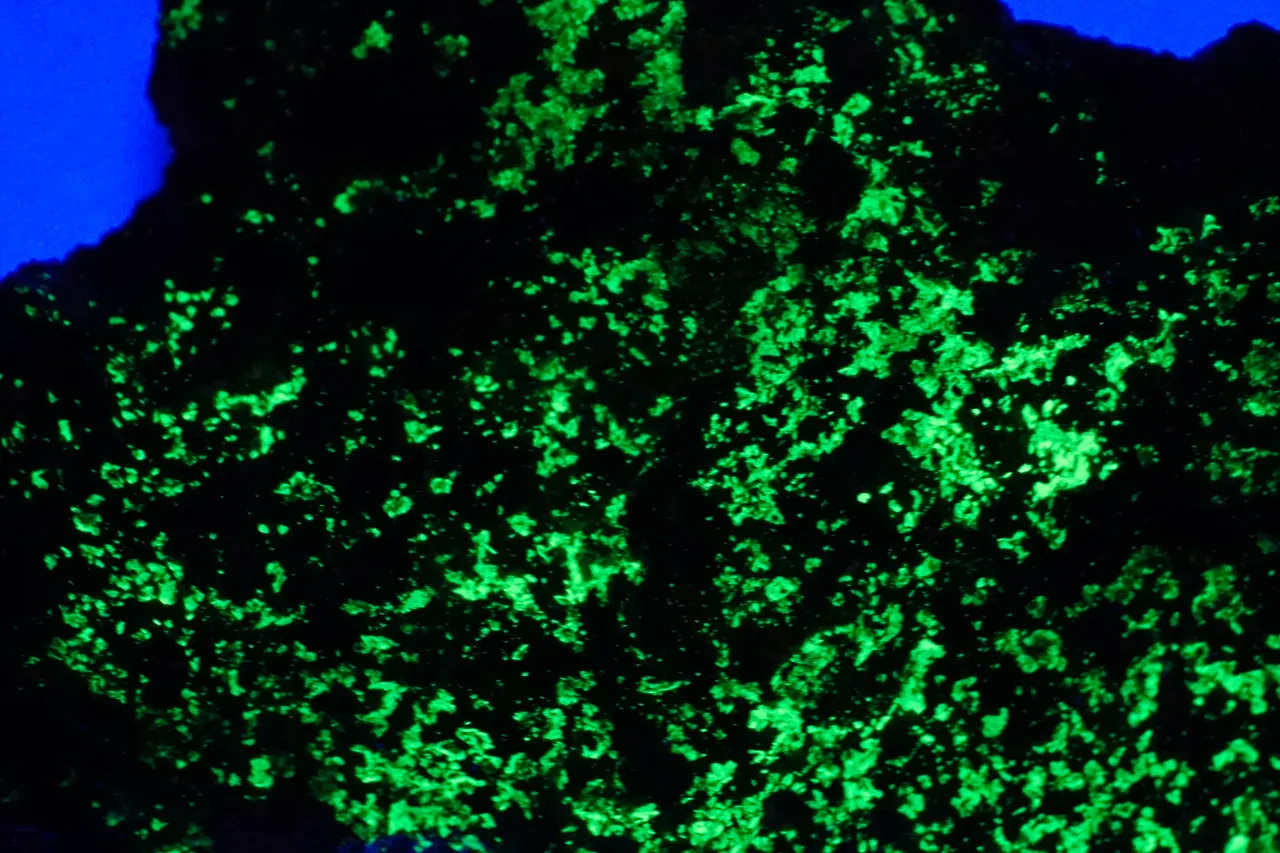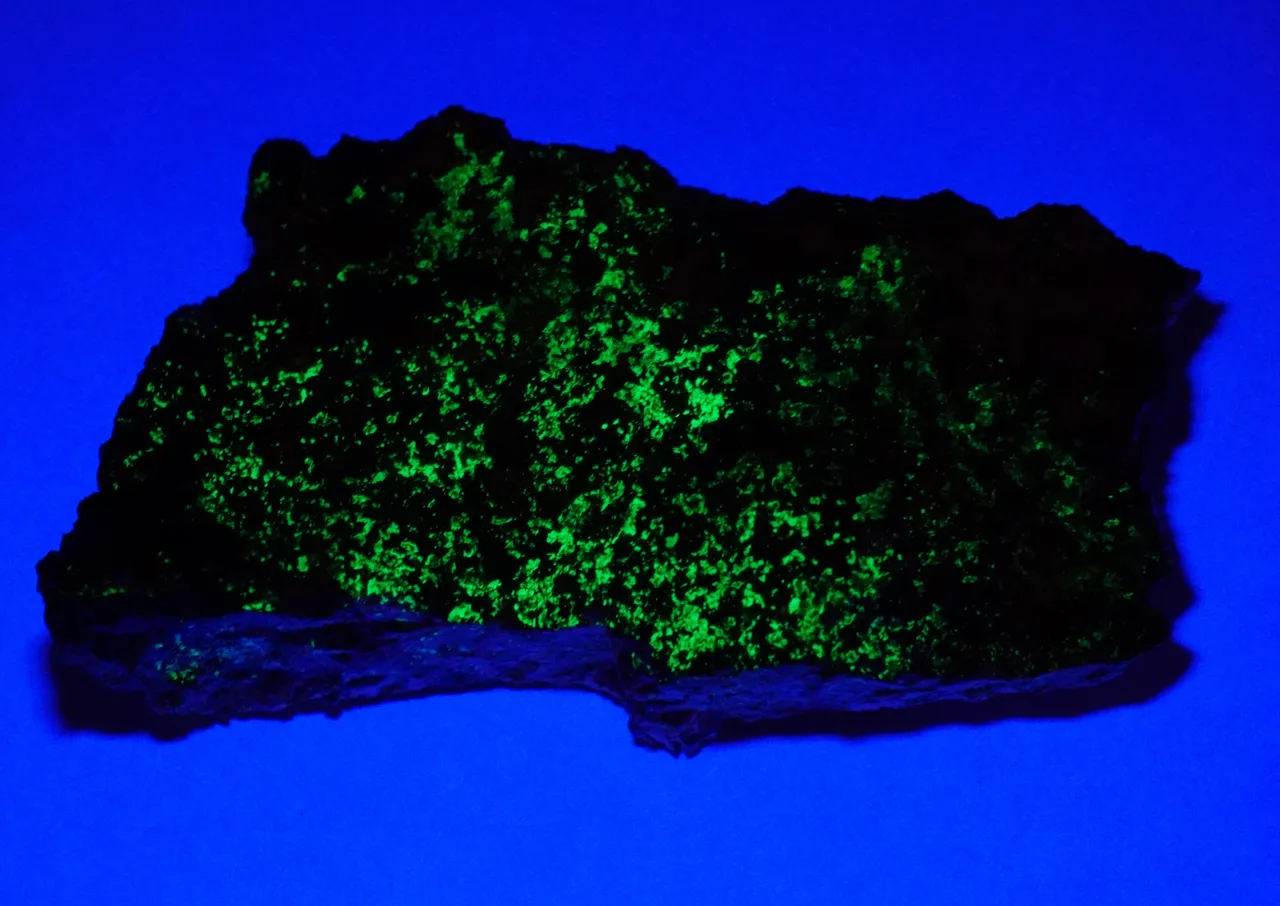Good day dear Hive Community, first of all I hope that you are all well and that you had a great weekend which was full of positive experiences! Today I would like to talk about minerals and hope you can learn something new.

Specifically I would like to write about an interesting topic in this article, fluorescence and if you irradiate some minerals with ultraviolet light, you can see how some specimens shine in different colors. Fluorescence can also be described as a phenomenon which is created by a spontaneous emission of light and when some objects are irradiated with a certain wavelength range, this light is returned in a larger wavelength and the light which is normaly invisible to the human eye is converted into visible. When it comes to minerals, it can be a great determination tool and this effect is triggered by some containing elements in the minerals such as metals and there are several hundred different minerals where this effect can occur.

This effect is also interesting in order to be able to analyze different samples and determine the composition and it can also be an important tool for determining uranium or sometimes diamonds. The origin of this phenomenon can already be traced to the 19th century and is derived from the word fluorescence which has been derived from the mineral fluorite and in different industries there are also some areas of application for it. To name a few examples of minerals in which this effect can occur are calcite, fluorite, sulfur, aragonite and many more and in my pictures the mineral Heinrichite can be seen. This phenomenon can occur in different colors such as red, green, blue and more and I think this effect comes into its own with this specimen and if you want to learn more about this mineral in general, you will find here a contribution from me here which I recently wrote.


Many thanks for stopping by and I hope you like my new contribution! I captured these pictures with my Camera Sony Alpha 6000 plus 55-210 mm lens!